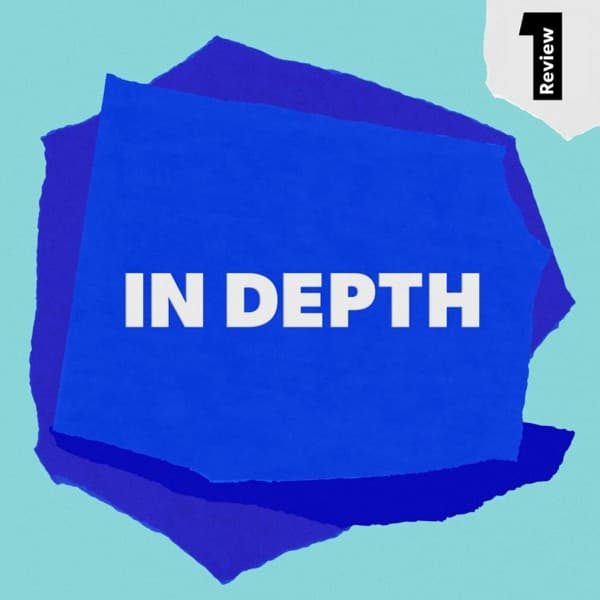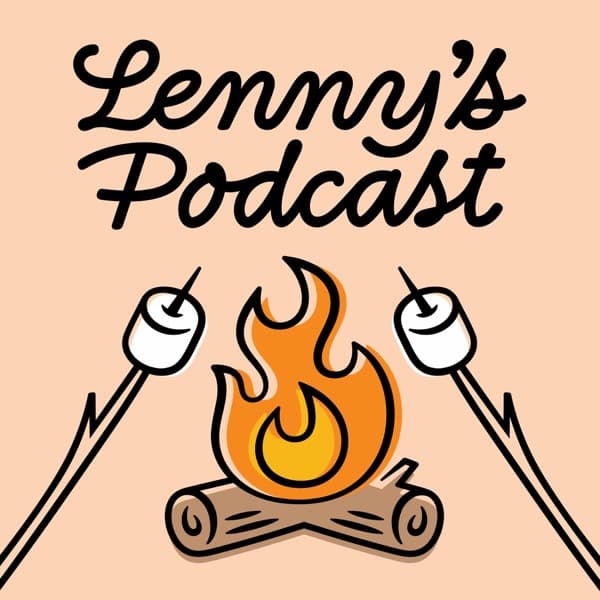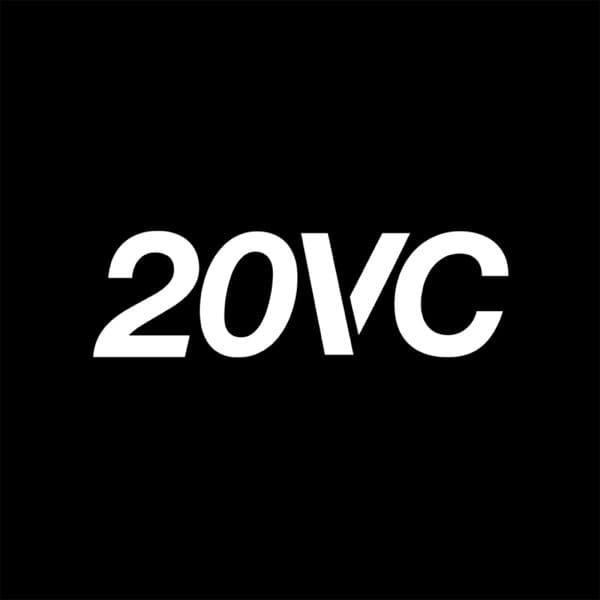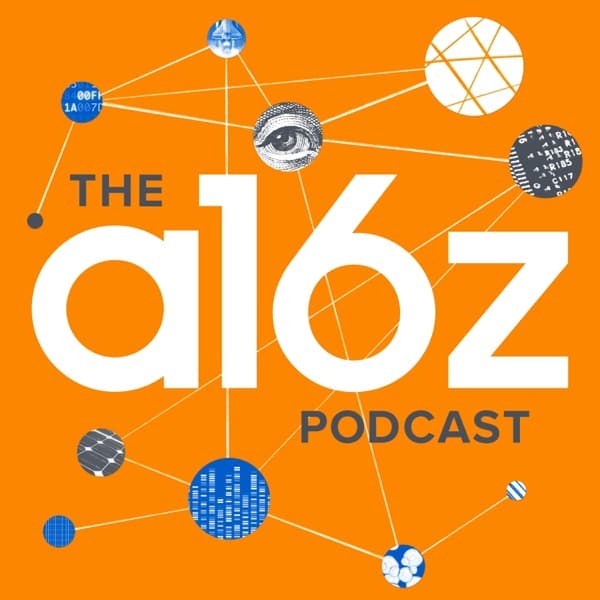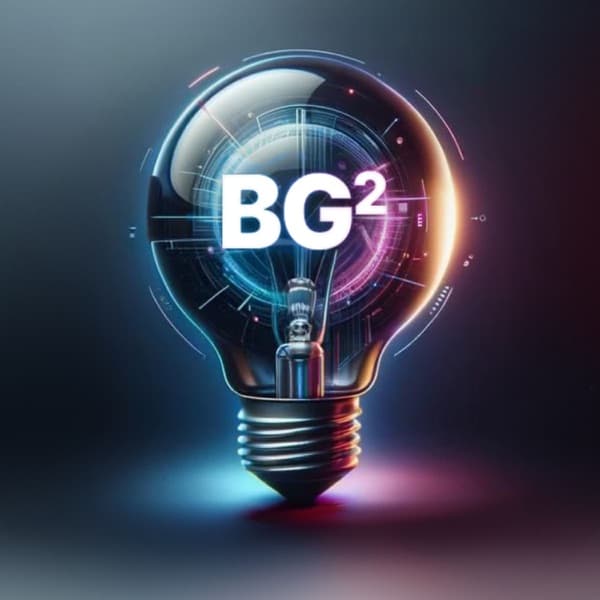Fireship: Google's Gemini 2.0 is a cost-effective AI model that excels in real-world applications, despite not leading in benchmarks.
OpenAI: A nail technician uses ChatGPT to generate creative nail art ideas, enhancing her design process.
Modern Wisdom: The discussion explores the importance of focusing on meaningful life goals, balancing wealth with personal fulfillment, and the impact of relationships on happiness.
In Depth: The discussion focuses on the journey of Braze, a customer relationship platform, from its inception to achieving product-market fit and scaling, emphasizing the importance of strategic patience, technical capability, and understanding market evolution.
Fireship - Google finally shipped some fire…
Google's Gemini 2.0 has been released, offering a significant advantage in the AI race by excelling in practical applications at a lower cost. While it doesn't top all benchmarks, it outperforms competitors in real-world use cases, such as processing large volumes of data more accurately and affordably. For instance, Gemini can process 6,000 pages of PDFs with better accuracy than its competitors at the same cost. This makes it a strong contender in the AI market, especially given its affordability, being over 90% cheaper than some alternatives. Additionally, Gemini offers a variety of models, including a free chatbot version, and supports extensive data input with a context window of up to 2 million tokens. Despite its strengths, it still lags behind in certain benchmarks like PhD-level math and science but ranks highly in user satisfaction tests like the LM Arena Benchmark. Google's strategic moves, such as open-sourcing the Pebble watch OS, also bolster its position in the tech community.
Key Points:
- Gemini 2.0 excels in real-world applications, processing large data volumes accurately and affordably.
- It is significantly cheaper than competitors, offering over 90% cost savings.
- The model supports extensive data input with a context window of up to 2 million tokens.
- Despite not leading in all benchmarks, it ranks highly in user satisfaction tests.
- Google's strategic open-source initiatives enhance its tech community standing.
Details:
1. 🚀 Gemini 2.0 Launch: A New Contender
1.1. Gemini 2.0 Launch Overview
1.2. Impact on JavaScript Framework Community and Media
2. 📉 Google's AI Struggles and Triumphs
- Google's AI model recently ranked below OpenAI 03 mini high and Deep Seek R1 in live benchmarks, signaling competitive challenges in the AI field.
- These benchmarks are significant as they measure the effectiveness and efficiency of AI models, impacting Google's perception as a leader in AI technology.
- In response to these challenges, Google plans to release Gemini 2.0, showcasing its commitment to innovation and maintaining its competitive edge in the AI market.
- The strategic release of Gemini 2.0 suggests Google's proactive approach to addressing its current competitive shortcomings and enhancing its AI capabilities.
3. 🏆 Gemini's Real-World Edge
- Gemini is considered Google's biggest win in the AI race due to its superior performance in real-world use cases.
- Gemini operates at a fraction of the cost compared to competitors, providing a significant cost advantage.
- An example highlighted is Gemini's ability to process 6,000 pages of PDFs more accurately and cost-effectively than any competitor.
- This capability demonstrates Gemini's edge in both efficiency and accuracy, making it a standout in the market.
4. 💰 Unmatched Cost Efficiency
4.1. Google's Financial Challenges
4.2. AI Developments and Market Impact
5. 🔍 Versatile Gemini Models
5.1. Cost Efficiency
5.2. Model Variants
6. 📊 Benchmark Performance Insights
- Flash boasts a 1 million token context window, extendable to 2 million on the pro model, accommodating extensive data like 100,000 lines of code or 16 novels.
- Competitor models such as 03 mini and deep seek are limited to 128k tokens, highlighting Flash's superior data handling capacity.
- This extensive context capability presents a significant advantage for applications involving large datasets, such as vector databases or certain startup environments.
7. 🧠 Natural User Interactions
7.1. Natural User Interactions with Gemini
7.2. Performance Benchmarks of Gemini
8. 📈 Google's Ecosystem and Open Source Efforts
- Google's Imagen is leading the text-to-image leaderboard, showcasing its strong position in AI model development. This demonstrates Google's strategic focus on advancing AI technology to maintain competitiveness against other industry leaders.
- By open-sourcing the operating system for the Pebble watch, Google signals a commitment to fostering a collaborative open-source community, aiming to enhance innovation and adoption of its platforms.
- Although Google's Gemini and the open-source Gemma need updates to stay competitive with advanced models like those from DeepMind, these initiatives underline Google's dedication to integrating proprietary and open-source models.
- For developers, deployment choices are crucial. Savola emerges as a modern deployment solution offering ease of use by integrating Git repos or Docker images, simplifying the development pipeline.
- Leveraging Google Kubernetes Engine and Cloudflare, Savola provides a robust infrastructure, reducing the complexity typically associated with deployment configurations, thus improving developer productivity and application scalability.
- Savola's streamlined deployment process enables the provisioning of resources and application deployment with a single click, demonstrating Google's commitment to enhancing developer experience and efficiency.
9. 🌐 Simplified Deployment with Savola
- Savola provides a comprehensive deployment solution, including application and database protection, CDN, and Edge caching, which enhances security and performance.
- The platform includes visual tools like graphs to help users visualize the deployment process, making it easier to manage and understand the workflow.
- Savola supports full automation of the code deployment process from development to production through CI/CD pipelines, reducing the time and effort required for deployment cycles.
- For new users, Savola offers a promotional $50 in free credits, encouraging them to test the platform's capabilities risk-free and experience its benefits firsthand.
OpenAI - Ten tiny canvases
The speaker, a nail technician and social media influencer, discusses how she integrates ChatGPT into her creative process for designing nail art. Initially a makeup artist, she found her passion in nail art, viewing each nail as a small canvas. She uses ChatGPT to explore a wide range of design ideas, particularly for seasonal themes like fall. By leveraging AI, she narrows down infinite possibilities to a manageable number of creative options, which she finds beneficial for both her and her clients. This approach allows her to maintain creativity while efficiently managing the design process.
Key Points:
- ChatGPT helps generate creative nail art ideas.
- AI narrows down design options from infinite to manageable.
- The technician uses AI for seasonal themes like fall.
- AI integration enhances creativity and efficiency.
- Clients benefit from diverse and refined design choices.
Details:
1. 🎨 Embracing Creativity Everywhere
- Creativity is integral to both personal and professional life, fostering innovation and effective problem-solving.
- Organizations that value creativity see a 20% increase in new project ideas through creative thinking workshops.
- Embracing a creative culture results in a 15% higher employee retention rate by boosting satisfaction and engagement.
- Creative approaches in cross-functional collaboration reduce project completion times by 25%, enhancing efficiency.
- Examples of successful creative integration include workshops, collaborative projects, and culture-building initiatives.
2. 💅 Nail Art Inspiration
- Blend a turquoise with a vibrant green on a couple of nails for a unique look.
- Experiment with pastel shades like lavender and baby pink for a soft, elegant finish.
- Use a bold red paired with gold accents to create a luxurious, festive design.
- Try incorporating metallic shades such as silver or bronze for a modern touch.
- Mix and match matte and glossy finishes for added texture and depth in designs.
3. 👩🎨 Meet Tapis Guy: Nail Technician & Influencer
- Tapis Guy is a well-known nail technician and social media influencer who operates from her studio.
- She has built a strong presence on social media, which significantly influences her business and client interactions.
- Her innovative nail art designs and techniques have garnered a large following and engagement online.
- Tapis Guy's journey from starting as a local nail technician to becoming a recognized influencer highlights her dedication and creativity.
- Her work has led to collaborations with brands and participation in high-profile events, expanding her reach and professional network.
4. 🎨 From Makeup to Nail Art Passion
- The transition from being a makeup artist to a nail artist underscores a significant personal passion for nail art, which became a preferred form of creative expression.
- Nail art is described as having "10 little canvases," offering a unique and intimate medium for artistic design that was more fulfilling than makeup artistry.
- The shift was motivated by the desire for a more detailed and personalized artistic outlet, allowing for intricate designs and the exploration of new techniques.
- The narrative suggests a deep connection to the craft, with nail art providing a sense of satisfaction and artistic freedom that was not fully realized in makeup artistry.
- Concrete examples of nail art projects or inspirations could further illustrate the passion and commitment to this new artistic path.
5. 📱 Using ChatGPT for Creative Ideas
- ChatGPT was tested for its ability to generate creative ideas, specifically using a fall theme, demonstrating substantial potential in assisting creative tasks.
- Initial use involved understanding ChatGPT's limitations, highlighting its strengths in brainstorming unique concepts and its role as an effective creative assistant.
- ChatGPT's application in creative processes was explored, showing its potential to enhance brainstorming sessions and inspire diverse ideas.
- Despite certain limitations, ChatGPT's ability to provide quick, varied, and innovative ideas makes it a valuable tool for creative professionals.
- The session revealed the importance of iterative usage and feedback to refine outputs and maximize creative potential.
6. 🤖 AI's Role in Artistic Exploration
- AI demonstrates an ability to understand art and color, which can be leveraged in creative fields to enhance artistic expression.
- Artists can explore AI's capabilities without fear, using it as a tool to enhance artistic expression.
- AI's interpretation of color and art provides a new medium for artistic experimentation, offering artists new ways to explore creativity and innovation.
- Specific applications include AI-assisted design tools and color theory applications, which can streamline artistic processes and inspire new art forms.
7. 🧠 Collaborating with AI in Nail Art
- AI tools like ChatGPT provide nail artists with a curated list of 10-20 creative design options, significantly narrowing down the infinite range of possibilities.
- The integration of AI in the creative workflow enhances efficiency by shifting the artist's focus from extensive brainstorming to execution and refinement of ideas.
- Clients experience a more personalized and diverse array of design choices when AI is used, improving overall satisfaction and engagement with the creative process.
8. 🔥 ChatGPT's Fire Design Adventure
- The segment highlights a creative pause, marked by music, intended to inspire and set the mood for the subsequent design challenges.
- Music is used strategically here to transition between different phases of the design process, serving as a mental reset for viewers.
- Although lacking in direct content, this musical interlude is crucial for pacing and maintaining viewer engagement throughout the design adventure.
- Future iterations could enhance relevance by integrating commentary or visual cues that tie the music to design principles or upcoming segments.
Modern Wisdom - #899 - Sahil Bloom - The Harsh Truth About Money & Happiness

The conversation emphasizes the significance of focusing on meaningful life goals and balancing financial wealth with personal fulfillment. It highlights the misconception that success is purely based on luck, arguing that hard work and focus are crucial. The discussion also explores the impact of relationships on happiness, citing studies that show strong relationships are key to a fulfilling life. Practical insights include the importance of setting clear priorities, understanding the role of money in happiness, and the need for self-awareness in decision-making. The concept of a 'life razor' is introduced as a guiding principle for decision-making, exemplified by personal stories and examples from successful individuals. The conversation also touches on the importance of time management and the need to periodically reassess life goals to ensure alignment with personal values.
Key Points:
- Focus on meaningful goals and balance wealth with fulfillment.
- Success requires hard work and focus, not just luck.
- Strong relationships are crucial for happiness and fulfillment.
- Set clear priorities and understand money's role in happiness.
- Use a 'life razor' as a guiding principle for decisions.
Details:
1. 🎉 New Year's Eve Stories: Family vs. Chaos
- The speaker celebrated New Year's Eve by spending time with a two and a half year old child, indicating a family-oriented and low-key celebration.
- The speaker went to bed at 8:30 PM, suggesting that the celebration was quiet and likely revolved around accommodating the child's schedule.
- This segment highlights the differences in New Year's celebrations based on family obligations and lifestyle, contrasting with more chaotic or traditional late-night celebrations.
- Specific activities involved included engaging the child in simple games and preparing a special family dinner, illustrating a nurturing environment.
- Anecdotal evidence showed the child's excitement in staying up slightly later than usual, adding a touch of novelty to the otherwise calm evening.
2. 🤢 New Year's Eve Misadventures: Norovirus Strikes
- Norovirus impacted the individual's New Year's Eve, highlighting the potential for illness to disrupt planned events.
- The experience occurred while the individual was dressed formally, indicating a significant contrast between the intended celebration and the actual experience.
- The symptoms of Norovirus, such as severe nausea and vomiting, drastically altered the individual's ability to enjoy the night, forcing them to leave the event early.
- Despite the formal setting and high expectations for the evening, the illness underscored the unpredictability of such gatherings.
3. 🚽 High-Stakes Bathroom Drama at a Formal Event
- For those prone to stomach issues, choose clothing that is practical and easy to remove, avoiding complex outfits that could delay bathroom access.
- Consider adopting practical solutions like pajama pants with a trap door, inspired by humor in pop culture, to manage bathroom needs efficiently.
- Sharing a bathroom with young children, especially during the night, is a common experience that underscores the need for readiness and adaptability.
- The presence of a toilet attendant at formal events can amplify stress during emergencies, suggesting a need for discreet and efficient personal solutions.
4. 🎯 Luck, Focus, and Perceptions of Success
- Success is often perceived as luck, but it typically follows a year of dedicated focus and effort.
- Individuals who achieve significant success are often initially criticized or doubted by others, illustrating the skepticism surrounding ambitious pursuits.
- Once success is achieved, critics often reframe the individual’s hard work and focus as mere luck, overlooking the dedication involved.
- For example, an entrepreneur who spends years developing a product may initially face disbelief, but upon achieving market success, their journey is often oversimplified as a stroke of luck.
- This shift in perception highlights a broader societal tendency to undervalue the role of sustained effort and resilience in achieving success.
5. 🍀 Understanding Luck and Privilege in Life
5.1. Perception of Luck and Achievement
5.2. Wealth and Privilege
5.3. Types of Luck in Life
6. ⏳ The Power of Time and Life's Turning Points
- Luck is a byproduct of actions: Luck is mostly a result of the actions you take, the motion you create, and your interactions with the world. It's difficult to get lucky without taking action.
- Control within limits: While some factors are outside your control, within your personal circumstances, much is controllable. Understanding this duality can be confusing but is crucial.
- Impact of focused time: A single year of focused effort can create significant changes in one's life, highlighting the importance of sustained dedication over time.
7. 📈 The Psychology of Goal Setting and Resolutions
- Resolutions are typically set from January to December due to the human brain's irrational motivation patterns which favor starting fresh at the beginning of a new year.
- People often focus their goals around significant milestones, such as marathon split times clustering around whole numbers like 3 hours, 3:15, and 3:30, due to psychological motivations.
- Consumer behavior also reflects this pattern, as illustrated by the price difference between a 1.99 carat and a 2.00 carat diamond, showing the psychological impact of rounding up to significant figures.
- These patterns suggest that people are naturally inclined to use milestones as motivational tools, which can be leveraged in both personal goal setting and marketing strategies.
8. 💎 Human Perceptions, Milestones, and Irrationality
- Human perceptions often attach significant ego to milestones, leading to irrational valuation, such as paying a 20% premium for a diamond that is 2.01 carats compared to one that is 1.99 carats, despite negligible differences.
- Year-end reflection is a common practice because of natural life slowdowns, offering a strategic moment for personal evaluation and goal setting, allowing individuals to benchmark their progress over the year.
9. 💰 Beyond Money: Understanding Life's True Wealth
9.1. The Measure of Money and Happiness
9.2. Creating a Balanced Life Score
9.3. Concept of Life Razor
9.4. Life Priorities and Seasons
9.5. Recognizing Life's Game
9.6. Time as a Valuable Asset
9.7. Balancing Work and Personal Life
9.8. Life's True Wealth
10. 🧠 Mindset Shifts and Decision-Making in Life
10.1. Expanding Luck Surface Area
10.2. Role of Courage
10.3. Virtues and Courage
10.4. Discipline and Uncertainty
10.5. Adversity and Leaning In
10.6. Fear of Success vs. Fear of Failure
10.7. Hedonic Adaptation
10.8. Value of the Climb
10.9. Unteachable Lessons
10.10. Wealth Beyond Money
10.11. Importance of Relationships
10.12. Think Days
In Depth - Inside Braze’s blitz to $500M in CARR | Building broad, going global, and outfoxing the competition | Bill Magnuson (Co-founder & CEO) and Kevin Wang (CPO)

Braze, originally Appboy, was founded in 2011 by Bill Magnuson, John Hyman, and Mark Germanson, with a focus on helping mobile app developers build sustainable businesses through better customer engagement. The founders had a strong conviction in the potential of the mobile app economy, which was not yet fully realized at the time. They ignored traditional startup advice to start narrow and instead built a robust platform from the beginning, anticipating the need for cross-channel communication and real-time data processing.
The company faced challenges in the early years, including skepticism from potential customers and a lack of immediate product-market fit. However, they persisted with a focus on long-term strategic goals and technical excellence. Braze's early success was partly due to its ability to anticipate market trends, such as the importance of data privacy and real-time customer engagement. They avoided shortcuts that could compromise their long-term vision, such as focusing solely on the gaming industry, which was lucrative but not aligned with their broader goals. As the mobile app ecosystem matured, Braze's comprehensive approach allowed it to capture a diverse customer base across various industries, leading to significant growth and eventually becoming a publicly traded company.
Key Points:
- Strategic patience and technical capability are crucial for long-term success in a competitive market.
- Building a robust platform from the start can provide a competitive edge as the market evolves.
- Understanding and anticipating market trends, such as data privacy and real-time engagement, can prevent future setbacks.
- Focusing on a diverse customer base rather than a single lucrative industry can lead to sustainable growth.
- Early challenges in achieving product-market fit require persistence and a willingness to adapt business models.
Details:
1. 🏁 Venture Firm's Role in Startup Success
- Achieving 'terminal value product market fit' is crucial for category dominance, which requires participating in long-term product races. Venture capital firms play a strategic role by providing the necessary financial support and guidance.
- Without the DNA to invest and cultivate this capability, startups risk losing to competitors who can effectively marshal go-to-market resources. Firms that lack this investment strategy often fall behind in the competitive landscape.
- The venture firm aids startups like Notion, Roblox, Uber, and Square in navigating company building challenges, illustrating the importance of strategic investment and resource allocation. These firms benefited from venture capital's guidance in refining their business models and scaling effectively.
2. 🤝 Introduction to Braze Leaders
- Braze is a customer relationship platform designed to manage multi-channel marketing effectively.
- The session emphasizes actionable strategies, offering a 'how-to' approach rather than just theoretical concepts.
- Braze focuses on practical implementation, ensuring strategies are directly applicable to real-world scenarios.
3. 📈 Braze's Evolution and Leadership
3.1. Braze's Market Position
3.2. Leadership Journey and Internal Development
4. 🔍 Early Struggles and Convictions in Mobile App Economy
- In 2011, the mobile app ecosystem was primarily driven by hobbyists, reflecting a nascent and uncertain market environment.
- Appboy's initial pitch aimed at converting apps into viable businesses, which faced considerable skepticism from a market not yet focused on monetization strategies.
- Despite resistance, Bill and Kevin maintained a strong belief in the significant potential of the mobile app economy, emphasizing a long-term vision amidst prevailing doubts.
- The founders' conviction was rooted in the growing ubiquity of mobile devices and the anticipated shift towards app-based consumer engagement, highlighting a strategic foresight.
5. 🚀 Braze's Path to IPO
- Braze's approach diverged from typical lean startup advice by immediately investing in building a robust platform, which was pivotal in attracting early enterprise clients and securing their first customers.
- The company navigated a competitive landscape by differentiating its platform, contributing to its successful journey to IPO.
- Braze's strategic focus on robustness and customer acquisition helped it establish a strong market presence, which was crucial in its path to IPO.
6. 🎓 Bill's Journey from MIT to Braze
6.1. Bill's Personal Journey
6.2. Braze's Corporate Growth
7. 📱 Early Mobile App Development Experience
- Graduated from MIT with a computer science degree in 2009, coinciding with the early launch of the smartphone industry and app stores.
- Worked at Google in Mountain View, contributing to a visual programming language for Android applications during the launch era.
- The visual programming language targeted education, aiming to make app development accessible to introductory computer science students.
- Collaborated with several colleges to incorporate this approach in freshman computer science courses.
8. 🌍 Transition from Google to Entrepreneurship
- Early mobile development allowed individuals to create useful applications without extensive software expertise, leveraging the ease of app creation for rapid prototyping and market entry.
- Mobile devices' capability to interact with the physical world enabled the quick realization of simple concepts, facilitating innovation in various sectors.
- The early mobile app market faced significant challenges, such as consumer reluctance to provide credit card information online, which hindered digital purchase adoption and limited revenue potential.
- Initial app store models were constrained by the lack of recurring or ongoing revenue streams, posing challenges for long-term business sustainability.
- Examples of successful early mobile apps include simple utility and entertainment applications that capitalized on the novelty of mobile technology.
- Case studies of early adopters showcase how they overcame technical and market challenges to establish a foothold in the burgeoning mobile app market.
9. 💡 Identifying Opportunities in Mobile Tech
- The energy and enthusiasm for mobile technology were evident early on, indicating a significant potential for growth and innovation in this sector.
- The shift towards mobile adoption was recognized as a major change in the world, presenting opportunities to be at the forefront of technological advancements.
- Engaging with mobile technology required a proactive approach to be involved in the transformative changes it would bring.
- In the early stages, identifying oneself as a product builder or hacker was crucial for leveraging the opportunities presented by the burgeoning mobile tech landscape.
10. 💼 Work Experience Influences Entrepreneurship
- The individual pursued a master's degree while working at Google, focusing on visual programming languages, which likely enhanced technical skills and prepared them for leadership roles.
- Briefly worked at Bridgewater Associates, a global macro hedge fund, aligning with interests in macroeconomics and systems, providing a broad understanding of business operations.
- The decision to enter the hedge fund industry was influenced by personal circumstances related to family and financial stability, demonstrating a strategic approach to career planning.
- After rapidly achieving financial goals in 16 months at the hedge fund, the individual transitioned to entrepreneurship, illustrating a proactive and goal-oriented approach.
- Served as CTO at Braze, leveraging a background in computer science and software engineering, emphasizing technical leadership and strategic planning in entrepreneurial ventures.
11. 🔄 Impact of Mobile on Business and Society
11.1. Impact of Mobile on Business
11.2. Impact of Mobile on Society
12. 🏢 Bridgewater's Influence on Braze Culture
- Bridgewater's culture emphasizes radical transparency, meritocracy, and objective decision-making, which have been foundational in building businesses like Braze.
- The experience at Bridgewater instills a mindset geared towards understanding and adapting to fundamental economic changes, making it an effective training ground for entrepreneurs.
- Specific practices from Bridgewater, such as candid feedback and continuous learning, have been directly applied to Braze's business strategies.
- The entrepreneurial development at Bridgewater is seen as pivotal, equipping founders with the skills to navigate complex business environments and drive innovation.
13. 🧗♂️ Early Challenges and Product Development at Braze
13.1. Transparency and Culture at Bridgewater and Braze
13.2. First Principles Thinking and Startup Challenges
13.3. Data Privacy and Ethical Data Usage
13.4. Founding and Early Product Development at Braze
13.5. Early Team and Market Strategy
13.6. Market Challenges and Product Evolution
13.7. Business Model and Customer Acquisition
13.8. Scaling and Market Positioning
13.9. Strategic Insights and Growth
14. 🏃♂️ Importance of Product Foot Race in SaaS
- Achieving terminal value product market fit involves engaging in long-term product foot races and winning them.
- Success in these product races requires having a technical and engineering-driven DNA within the company.
- Without investing in and cultivating a strong technical foundation, companies risk losing to competitors who can leverage their go-to-market resources effectively.
- A strong technical foundation includes having a skilled engineering team, investing in R&D, and fostering a culture of innovation.
- Companies like ExampleCorp and InnovateTech have successfully engaged in product foot races by prioritizing their technical capabilities and continuously iterating on their products.
15. 🧠 Insights on Competition and Market Positioning
15.1. Pre and Post Product Market Fit Competition
15.2. Long-term Strategy and Competitor Analysis
15.3. Efficiency and Resource Allocation
15.4. Leveraging Competitive Advantages
15.5. Managing Competitive Focus
15.6. Customer and Product Alignment
15.7. Scale and Prioritization in Early Days
16. 👥 Leadership Lessons and Company Vision
- Strategic patience is emphasized as a critical leadership trait, allowing leaders to position the company in the market and organizationally for long-term success.
- The ability to react appropriately without being overly reactive is highlighted as a valuable skill in leadership.
- Repetition of company vision and strategy across all company meetings ensures alignment and understanding among team members, emphasizing its importance in effective communication.
- Kevin, the first full-time product person, demonstrated the necessity of repeating the product vision and strategy to ensure comprehensive understanding and alignment within the team.
Included Channels
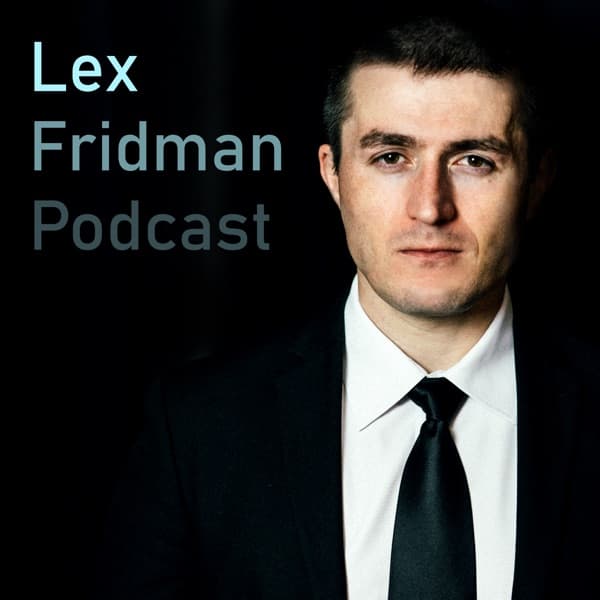 Lex Fridman Podcast
Lex Fridman Podcast All-In with Chamath, Jason, Sacks & Friedberg
All-In with Chamath, Jason, Sacks & Friedberg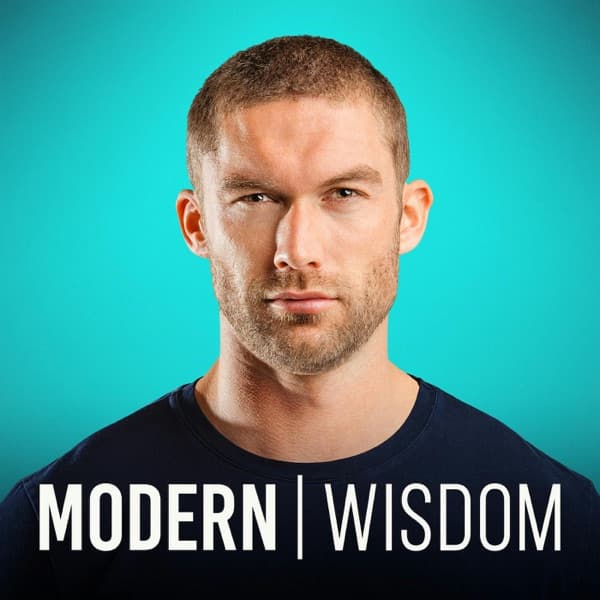 Modern Wisdom
Modern Wisdom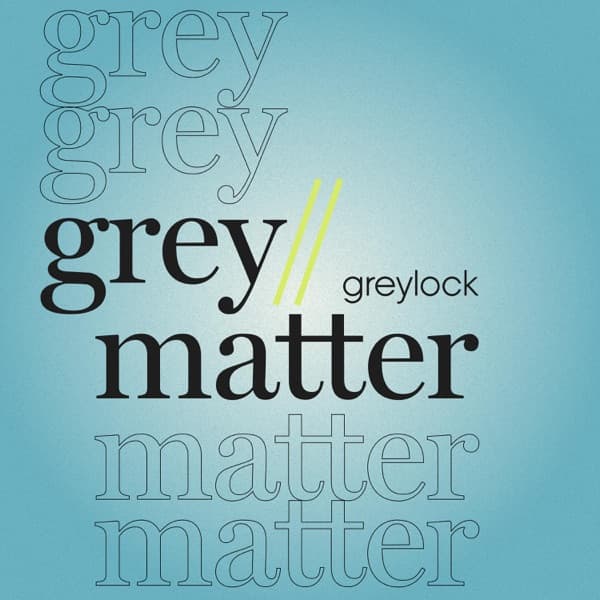 Greymatter
Greymatter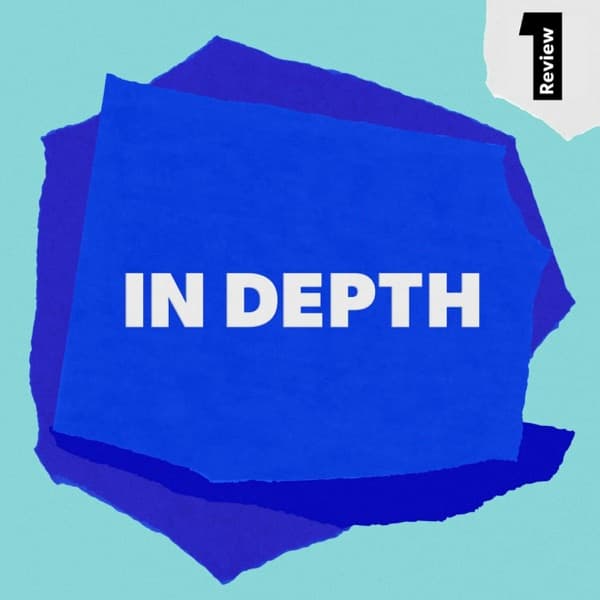 In Depth
In Depth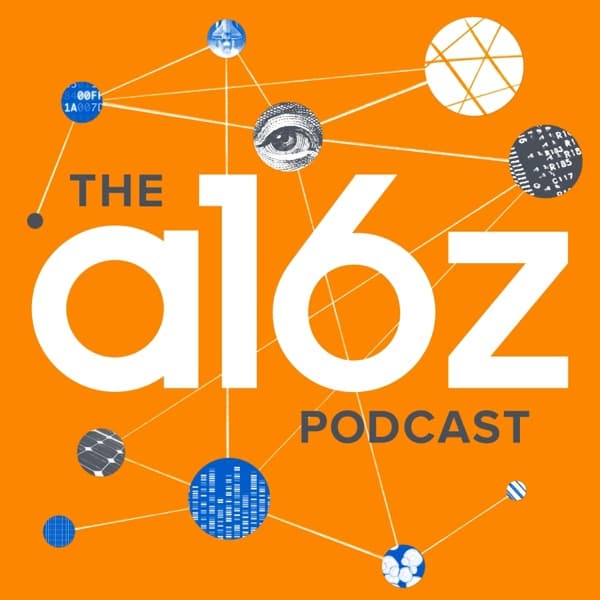 a16z Podcast
a16z Podcast Lenny's Podcast: Product | Growth | Career
Lenny's Podcast: Product | Growth | Career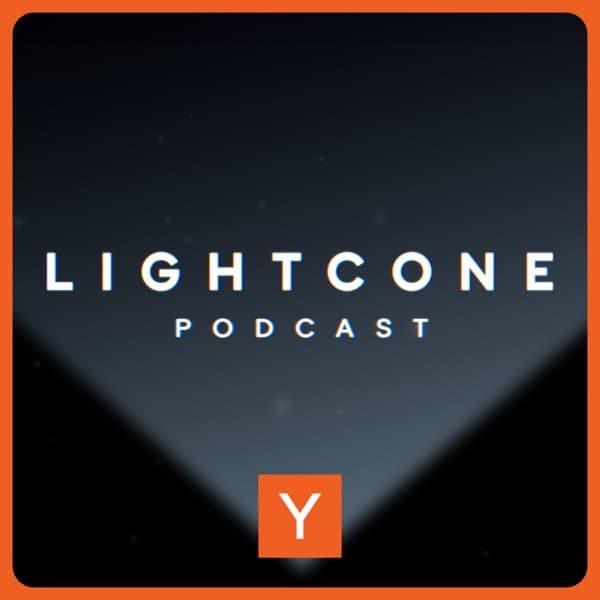 Lightcone Podcast
Lightcone Podcast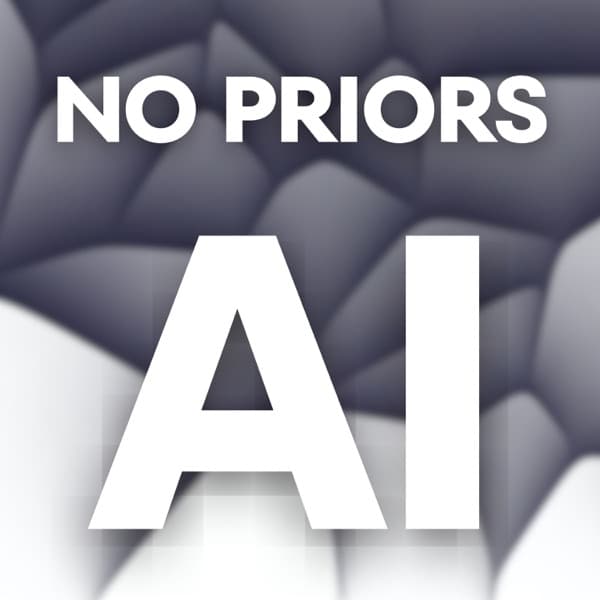 No Priors AI
No Priors AI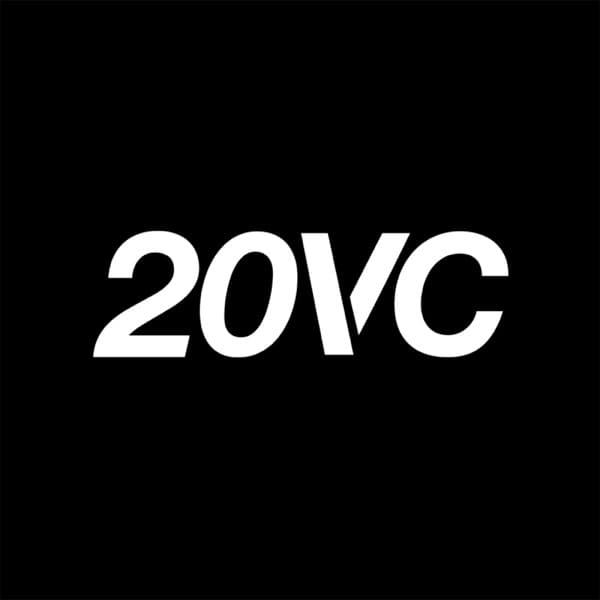 The Twenty Minute VC (20VC): Venture Capital | Startup Funding | The Pitch
The Twenty Minute VC (20VC): Venture Capital | Startup Funding | The Pitch How I Built This with Guy Raz
How I Built This with Guy Raz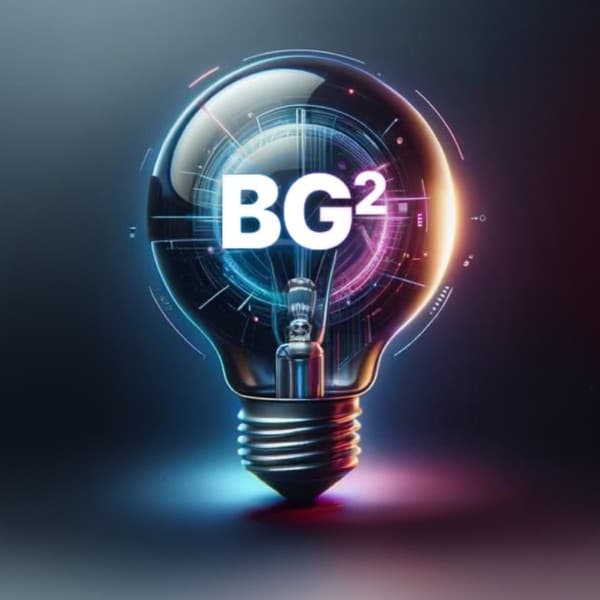 BG2Pod with Brad Gerstner and Bill Gurley
BG2Pod with Brad Gerstner and Bill Gurley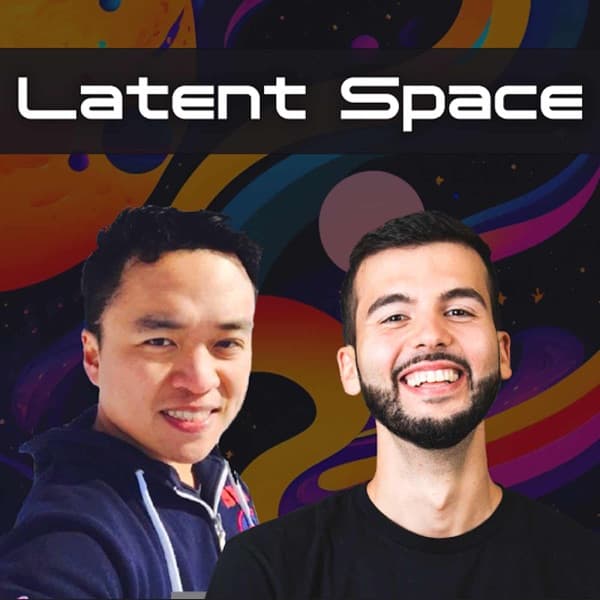 Latent Space: The AI Engineer Podcast
Latent Space: The AI Engineer Podcast
